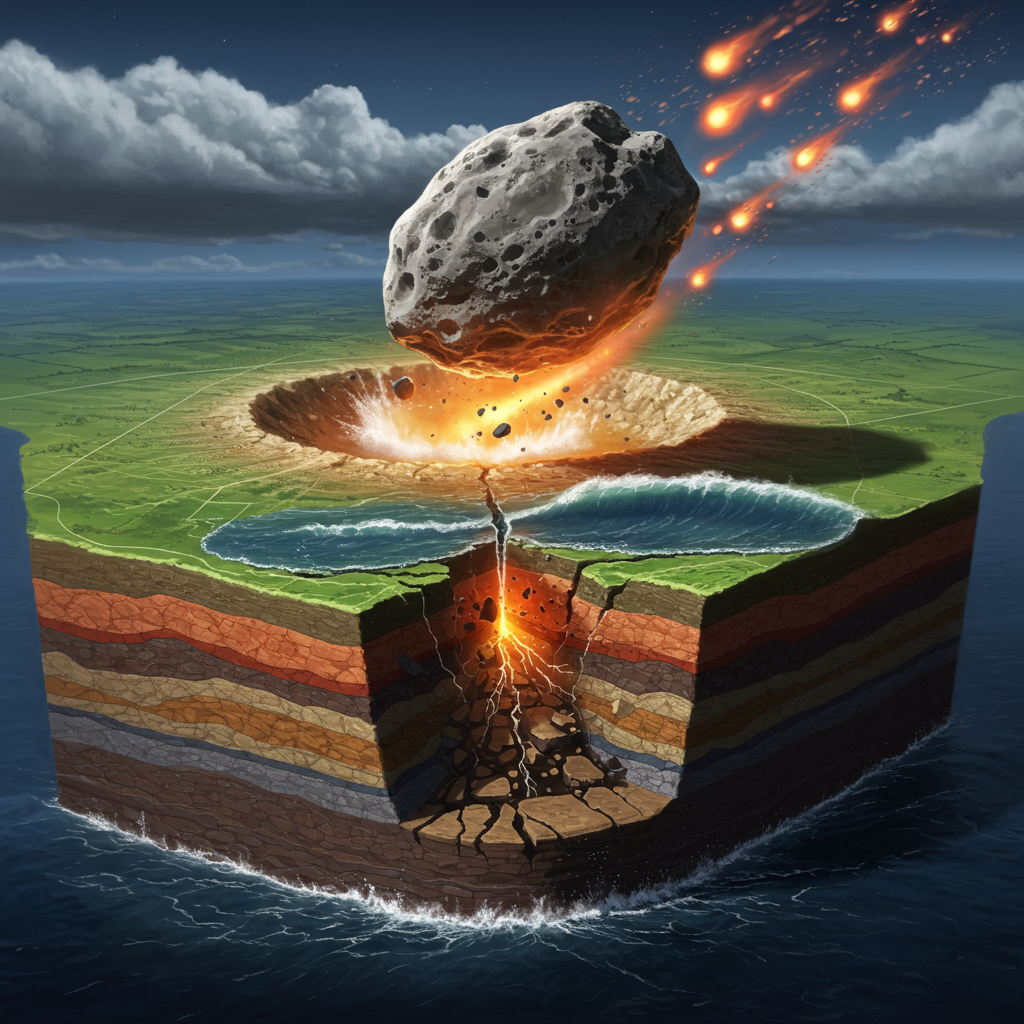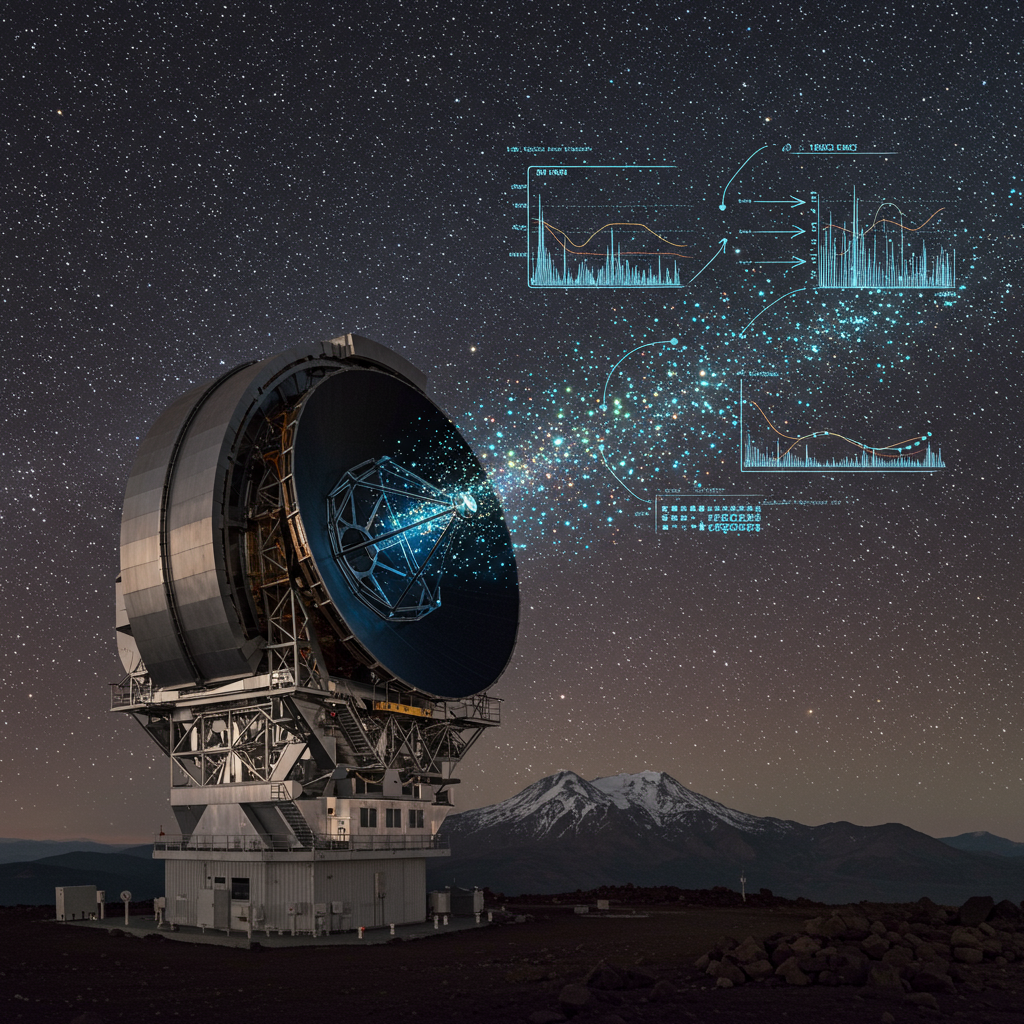For decades, a vast, hidden geological structure beneath the North Sea has puzzled scientists. Was it formed by ancient salt movements, volcanic activity, or something far more spectacular? Now, thanks to groundbreaking new research, the mystery is officially over. A formidable asteroid impact, roughly 43 million years ago, definitively created the Silverpit Crater, settling a long-standing scientific debate and offering unprecedented insights into Earth’s dramatic past. This landmark discovery reshapes our understanding of planetary history and provides vital clues for assessing future extraterrestrial threats.
The Deep Sea Enigma: Unraveling the Silverpit Crater’s Origins
The Silverpit Crater, a geological marvel measuring nearly two miles (3 km) across, lies buried 700 meters beneath the seabed of the southern North Sea. Situated approximately 80 miles (128 km) off the East Yorkshire coast, it was first unearthed by petroleum geoscientists in 2002. Its distinctive circular shape, central peak, and concentric fault lines immediately suggested a hypervelocity impact. However, this theory quickly ignited a fierce debate within the geological community.
Skepticism ran high. Many prominent geologists proposed more “mundane” explanations. Some believed the crater’s features were caused by the complex movement of deep-seated salt rock. Others posited that a collapse of the seabed, potentially linked to volcanic activity, was responsible. This disagreement culminated in a public debate at the Geological Society in 2009. There, attendees overwhelmingly rejected the asteroid impact hypothesis, voting 80-20 in favor of the salt movement explanation. The impact origin theory, despite its compelling initial evidence, was sidelined.
Overturning Decades of Doubt with New Evidence
The tide has now turned, thanks to a dedicated team led by Dr. Uisdean Nicholson, an associate professor at Heriot-Watt University in Edinburgh. Funded by the Natural Environment Research Council (NERC), their meticulous study employed advanced techniques to re-examine the Silverpit structure. Dr. Nicholson, who witnessed the 2009 debate as a PhD student, led the charge to find definitive answers.
The research hinged on two crucial lines of evidence. First, newly available seismic imaging offered an “unprecedented look” at the crater’s subsurface architecture. This high-resolution data provided a detailed map of the subterranean landscape. Second, and perhaps most conclusively, was the microscopic analysis of rock cuttings recovered from an oil well drilled in the vicinity. These samples, described by Dr. Nicholson as a “needle-in-a-haystack” discovery, yielded rare “shocked” quartz and feldspar crystals at the depth of the crater floor. These crystals possess a unique internal fabric that can only be formed by the extreme shock pressures generated during an asteroid impact. “These prove the impact crater hypothesis beyond doubt,” Dr. Nicholson affirmed.
Reconstructing the Cataclysmic North Sea Asteroid Impact
With the mystery resolved, scientists could precisely reconstruct the ancient cosmic collision. Around 43 to 46 million years ago, during the Eocene epoch, a massive asteroid or comet descended upon the Earth. Estimates suggest this extraterrestrial object was approximately 535 feet (160 meters) wide—comparable in size to a significant landmark like York Minster. It struck the ancient North Sea seabed at a relatively low angle, approaching from the west.
The immediate aftermath was nothing short of catastrophic. Within minutes of impact, an immense curtain of rock and water, reaching a staggering 1.5 kilometers high, erupted from the ocean. This colossal plume eventually collapsed, unleashing an enormous tsunami. Geological models indicate this ancient wall of water surged to an incredible height of 328 feet (100 meters). Such an event would have dramatically altered the regional seascape and had devastating consequences for any life forms, including early mammals, in the vicinity.
A Rare Window into Earth’s Impact History
The confirmation of the Silverpit Crater as an asteroid impact site is significant not only for resolving a scientific puzzle but also for its broader implications in planetary science. Earth is a dynamic planet; its surface is constantly reshaped by plate tectonics, erosion, and sedimentation. Because of these processes, impact craters, especially those formed tens of millions of years ago, are exceedingly rare and often poorly preserved.
Dr. Nicholson notes the scarcity of such geological features: while approximately 200 confirmed impact craters exist on land globally, a mere 33 have been identified beneath the ocean. The Silverpit Crater is considered “exceptionally preserved” due to the protective layers of sediment that have accumulated over it through geological time. This makes it an invaluable site for study, offering a unique opportunity to understand how celestial impacts shape planets beneath their surface.
Comparing Silverpit to Other Cosmic Collisions
The Silverpit event, while immense, was considerably smaller than the more famous Chicxulub Crater in Mexico. The Chicxulub impact, which occurred 66 million years ago, involved an asteroid estimated to be 6 to 9 miles (10-15 km) wide. That colossal event triggered widespread environmental devastation, famously linked to the extinction of 75% of Earth’s plant and animal species, including the dinosaurs. Silverpit, by contrast, is the only known impact crater near what is now the United Kingdom, highlighting its regional importance. It joins other recently confirmed marine craters like the Nadir Crater off West Africa, expanding our knowledge of Earth’s impact record.
Understanding events like the Silverpit impact is critical for more than just historical curiosity. Dr. Nicholson stresses that these findings offer crucial insights into how asteroid impacts have shaped our planet’s evolution throughout its geological past. Furthermore, such research is vital for predicting the potential consequences of future asteroid collisions. By studying well-preserved craters like Silverpit, scientists can refine models for planetary defense, assess risks, and potentially develop strategies to mitigate future threats.
Frequently Asked Questions
What is the Silverpit Crater and where is it located?
The Silverpit Crater is a roughly two-mile (3 km) wide geological structure situated 700 meters below the seabed in the southern North Sea. It lies approximately 80 miles (128 km) off the East Yorkshire coast in the United Kingdom. Initially discovered in 2002, recent research has definitively confirmed that it was formed by an asteroid impact around 43 to 46 million years ago. Its location and subsurface nature meant its origin was debated for years.
How was the North Sea asteroid impact confirmed after years of debate?
Confirmation came through a new study led by Dr. Uisdean Nicholson of Heriot-Watt University. The research utilized advanced seismic imaging to provide a detailed view of the crater’s structure. Crucially, microscopic analysis of rock cuttings from an oil well revealed rare “shocked” quartz and feldspar crystals. These crystals possess a unique fabric that can only be created by the extreme shock pressures of an asteroid impact, providing irrefutable proof and resolving a geological debate that had lasted for over two decades.
Why is understanding the Silverpit Crater important for future planetary defense?
Understanding the Silverpit Crater is vital for future planetary defense because it provides a well-preserved case study of a significant, albeit smaller, asteroid impact on Earth. By analyzing its structure and the effects of the collision, scientists can refine models for predicting the consequences of future asteroid strikes. This knowledge helps assess risks, understand potential tsunami generation, and informs strategies for identifying and potentially mitigating future extraterrestrial threats, safeguarding our planet.
A Glimpse into Our Cosmic Past and Future
The confirmation of the North Sea asteroid impact is a remarkable scientific achievement. It closes a chapter on a long-standing geological puzzle and opens a new one, enriching our understanding of Earth’s violent and dynamic history. The Silverpit Crater stands as a testament to the powerful forces that have shaped our world, offering a rare, sub-oceanic window into a cataclysmic event millions of years ago. As researchers continue to unlock its secrets, this discovery not only helps us chart our planet’s past but also provides critical data to prepare for challenges from space that might lie ahead. The echoes of that ancient impact in the North Sea continue to resonate, guiding our scientific exploration and enhancing our vigilance.




